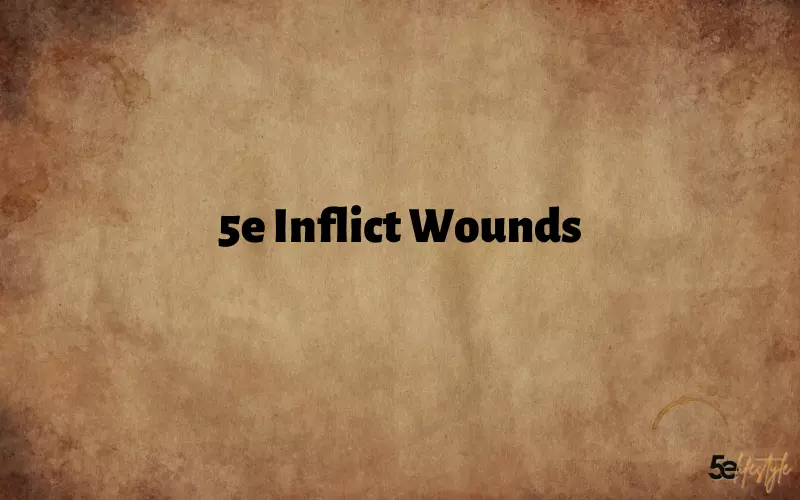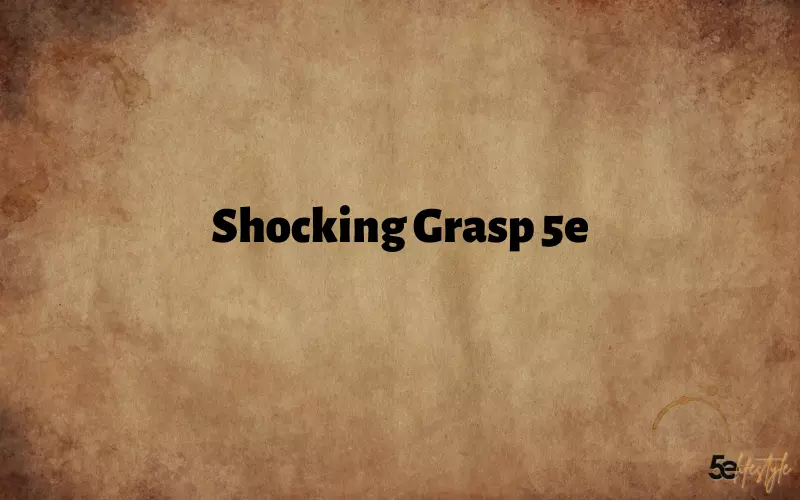Inflict Wound is a first-level spell on the pastor’s records. While prior releases of D&D essentially made Cure Light Wounds a reversible spell (with the switched form, Cause Light Wounds, inflicting a similar measure of harm it would ordinarily recuperate), in 5e Inflict Wounds is an independent magic spell with the following states:
School: Necromancy
Projecting Time: 1 activity
Range: Touch
Parts: V, S
Length: Instantaneous
Classes: Cleric
The spell permits the minister to make a scuffle spell assault against any animal they can reach, causing 3d10 necrotic harm. While cast utilizing a spell opening above the first level, the harm is expanded by 1d10 for each extra level.
What are 5e Inflict Wounds Pros and Cons?
All in all, is Inflict Wounds 5e worth taking up the important land of a spell opening? Essentially Domain spells are gifts, so regardless of whether one is somewhat of a flop for your specific minister, you didn’t need to compromise one more spell for it. In any case, since Inflict Wounds isn’t among anybody’s Domain spells, we need to do an examination to check whether it merits occupying room in your profound quiver.
How about we get going with the rudiments – the spell causes pretty darned great harm. A first-level spell that does 3d10 of any kind of harm is a real pro, and the way that Inflicts Wounds bargains necrotic harm just improves upon the arrangement.
Protection from necrotic harm might be significantly more normal than protection from brilliant harm, yet it’s more uncommon than protection from the more essential natural sorts of harm – shoot, cold, and lightning – as well as protection from non-mysterious weapons assaults. More forthright, protection from necrotic harm isn’t a quality that springs up haphazardly. The animals that have it will by and large (however not solely) be of the undead assortment.
That intends that, when in doubt, in the event that you can’t see projecting bones, you can likely be certain you’ll bargain full harm with it.
Offsetting the great harm of Inflict Wounds 5e is the way that it’s a very close assault. The spell depends on a skirmish spell assault, meaning you can utilize it against foes you can contact – which is a roundabout approach to saying you can utilize it against adversaries that can contact you. There are basically a couple of spells that let the pastor make mystical pot efforts from a protected distance – the 60′ scope of the Sacred Flame cantrip is a genuine model.
You can fill that sort of distance with a great deal of battle weighty front liners to remain among you and anything that you’re destroying. Cause Wounds; then again, expects you to be right up in the skirmish except if you’re managing a foe that is some way or another wormed their direction behind the line. With specific brotherhoods, similar to those of the War space, a cleric may be entirely agreeable be directly in the main part of things.
For some others, however, a spell that requires getting into smacking the scope of the foe is definitely not an optimal decision. In conclusion, consider the absence of a saving toss with regards to Inflict Wounds. Those who’ve taken the time and work to run the numbers (for reasons unknown) can see you that assault rolls for the most part help an assailant out more frequently than depending on the foe to bomb a save.
Except for builds, which for the most part are more grounded on AC than they are on save rewards, most animals in each sort are more fragile against assault rolls.
Click on our homepage to get more informative blog posts on a whole range of topics. 5elifestyle.



